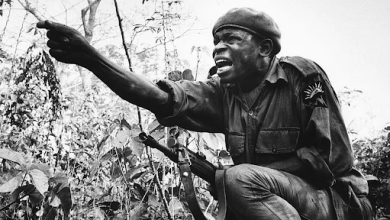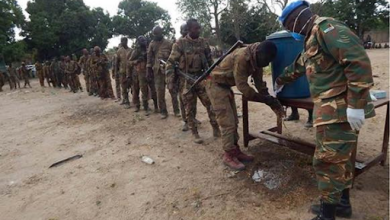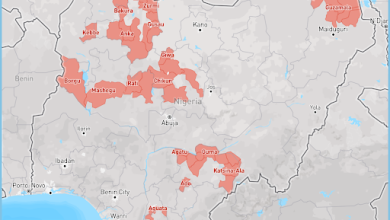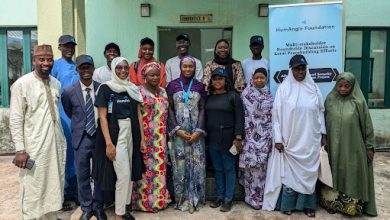ISWAP’s Transport Inventory, Engineering Capacities Feeding Its Campaign Of Terror
The capacity of national forces in Lake Chad Basin to deny the Islamic State West Africa Province (ISWAP) access to motorised vehicles and weapon systems could have an impact on the group's lethality and terror campaign.
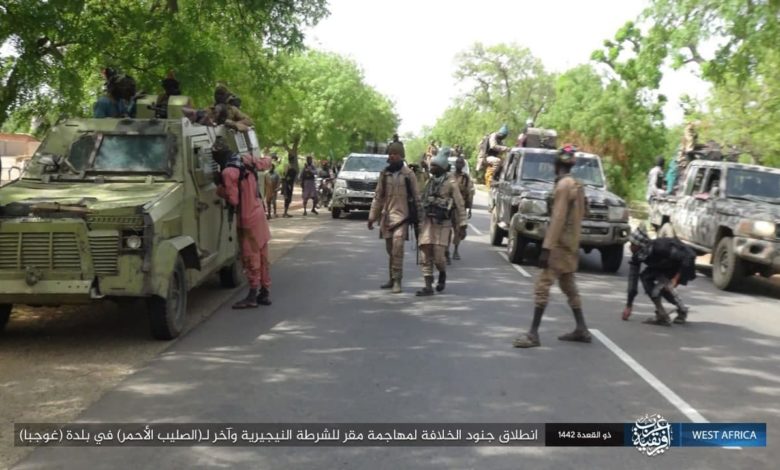
ISWAP’s ability to capture, modify, and utilise motorised vehicles, as well as navigate water bodies with boats, has allowed the group to sustain terror campaigns and state-like activities in Northeast Nigeria and the Lake Chad Basin.
Since its 2016 split from Jama’atu Ahlis Sunnah lid-Da’wati wa’l-Jihad also known as JAS or Boko Haram, ISWAP has become one of the most potent franchises of the Islamic State and the dominant terror group in the Lake Chad Basin. The group uses diverse modes of transportation ranging from boats, motorcycles, pickup trucks, and, more recently, improvised up-armoured carriers to move within and outside its enclaves.
The Toyota Hilux and Buffalo land cruisers pickup trucks mostly captured in ambushes and raids on national forces and partners make up a significant segment of the vehicles in the ISWAP inventory deployed with ground assault and anti-aircraft weapon systems.
These light trucks are usually mounted with Heavy Machine Guns (HMG) such as the Soviet-designed NSV and DShK HMGs, Chinese-designed W-85, and Type 85 HMGs chambered for 12.7 mm bullets. Other light trucks in the group’s inventory are equipped with multiple rocket launcher tubes for firing 107mm and 122mm unguided rockets while some trucks have been seen in dual configuration with a recoilless gun and HMG.
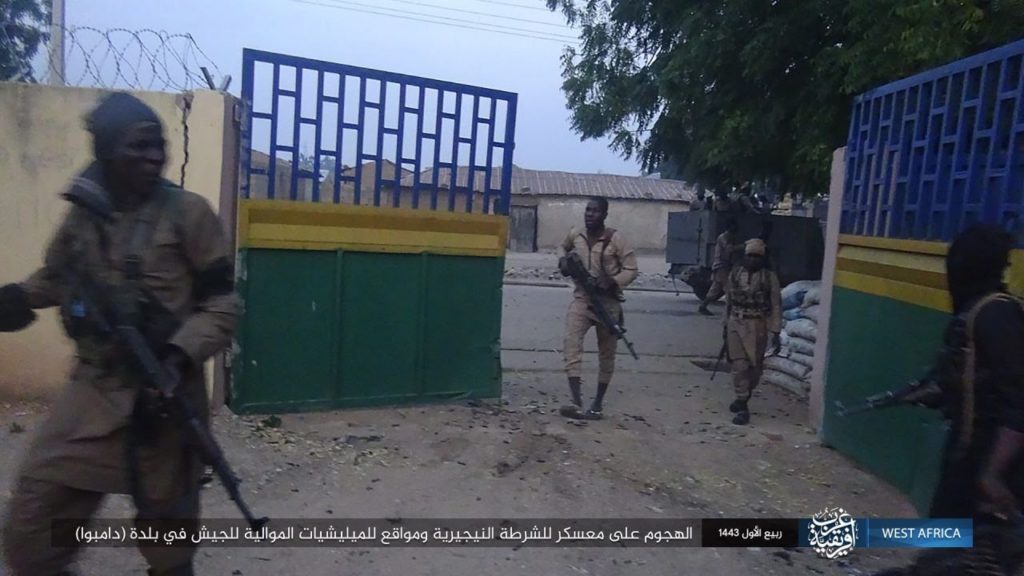
In June, an improvised armoured carrier for fighters built on what is presumably a Toyota Chassis appeared in ISWAP photos of an attack in the Gujba area of Yobe State. The carrier was fabricated by fitting sections removed from a previously captured armoured personnel carrier. Another up-armoured carrier was shown in photos released on Nov. 3, showing militants attacking security forces in Damboa town, Borno State. One other photograph from the batch had a cannon from a BMP-1 mounted on a truck.
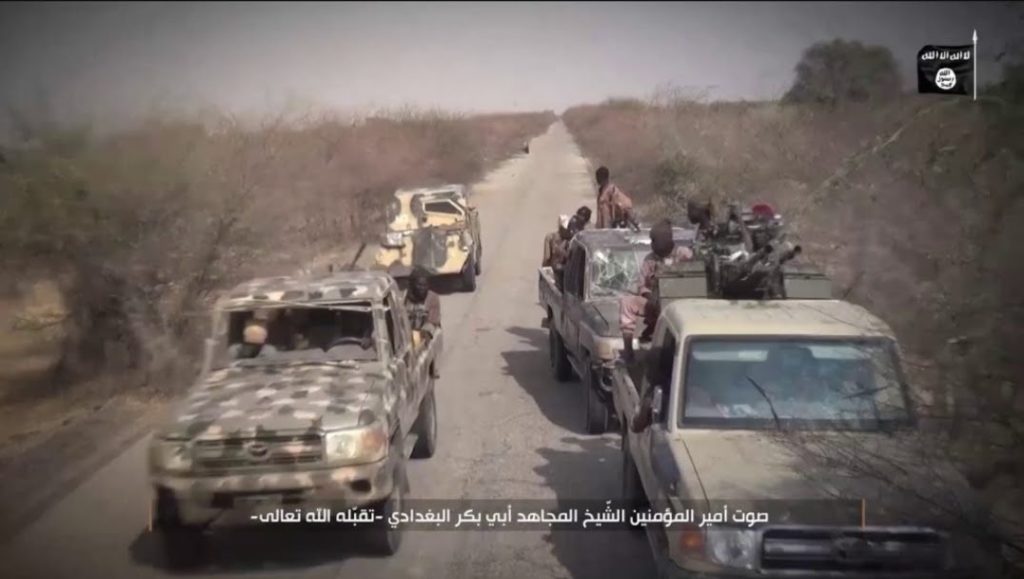
The terror group is also known for destroying military armoured vehicles or removing parts such as armoured glass windshields and attaching them to up-armoured suicide vehicle-borne improvised explosive devices (SVBIEDs). This tactic of using armoured SVBIED and improvised carriers to support the activities of fighters on the battlefield poses risks to counterinsurgency forces in the region.
In the past months, the group has stepped up the use of captured Nigerian Army (NA) armoured vehicles to target security forces.
The recent propaganda video which surfaced online on Saturday, Oct. 31, showed fighters employing a captured MOWAG Piranha armoured personnel carrier for an attack. The military has encountered and disabled at least two former NA armoured vehicles used in attacks on bases. For instance, the Fv103 spartan tracked armoured personnel carrier used in an attack on Askira. And, in Damboa, an MT-LB amphibious multi-purpose tracked carrier was recaptured.
This use of armour for SVBIED and the fabrication of armoured transport provides insights into ISWAP’s technical capabilities for stripping, welding, and reusing sections of abandoned or captured armoured vehicles.
The capacity of the group to keep vehicles operational further highlights the presence of mechanical competencies to use commercial off-the-shelf parts or parts from decommissioned vehicles. The Nigerian Air Force frequently scrambles fixed and rotary combat aircraft to target and destroy ISWAP vehicles. The group has, however, adopted measures to evade aircraft by hiding underneath tree cover and covering vehicles with leaves.
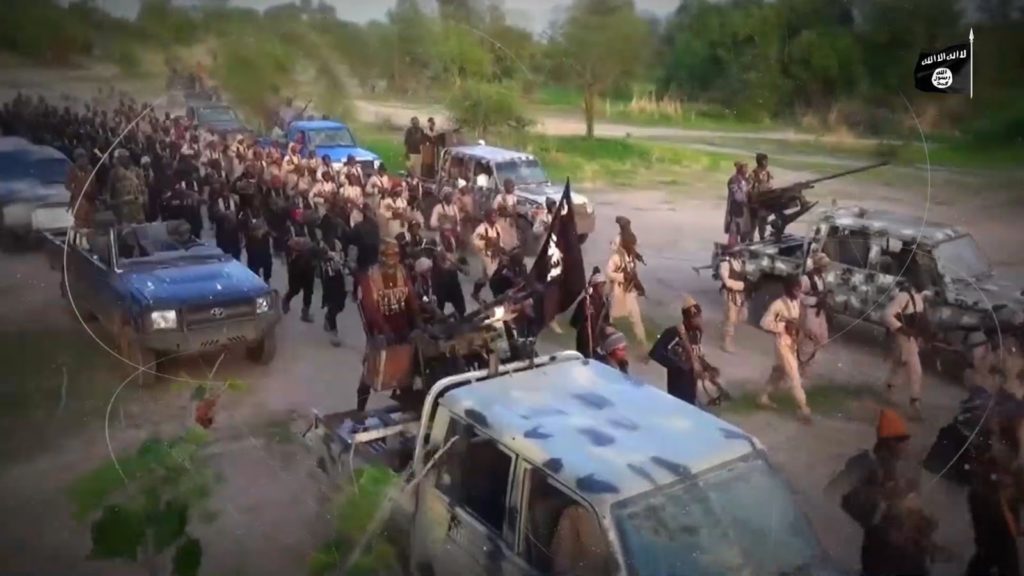
From the recent propaganda material, Calibre Obscura, a weapon researcher, observed light trucks fitted with dual KPV14.5mm, autocannon retrieved from ZSU-23-4 shilka, LG3 automatic grenade launcher system, and SPG-9(M) recoilless gun. The video also had fighters in an ISWAP motorcycle detachment holding a wide range of assault weapons including a hand-held revolver-type grenade launcher, shoulder-fired rocket-propelled grenade, and AK pattern assault rifles.
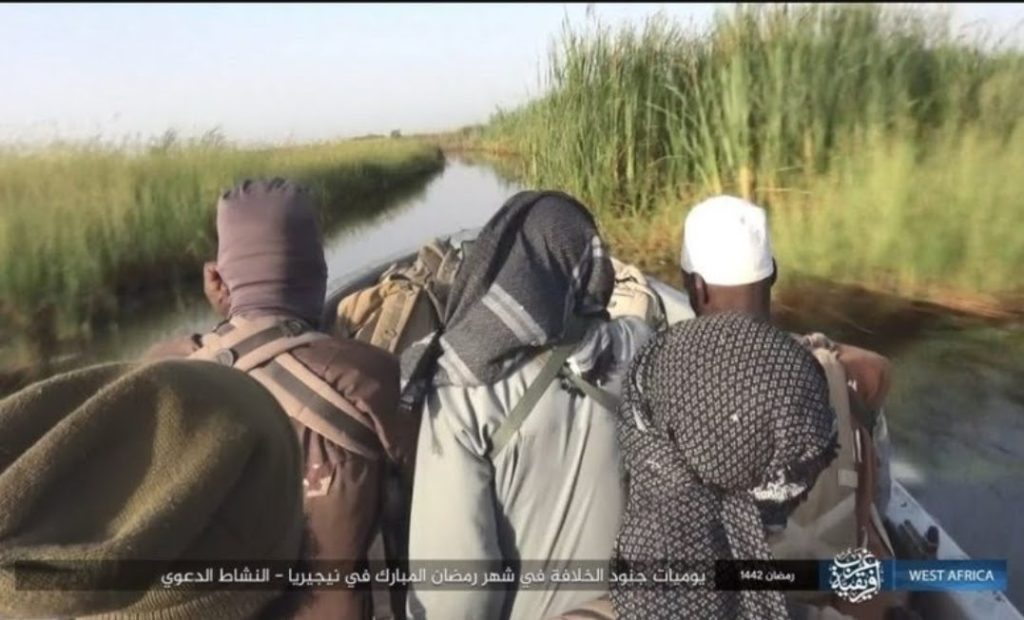
ISWAP uses boats and riverine detachments to support both offensive and socio-economic activities in Lake Chad, particularly around the islands known as Tumbuns. The lake and its wetlands provide revenue generation and sustenance opportunities through the exploitation of its natural resources, which support fishing, farming, cattle-rearing, as well as the local economy of trading products and by-products.
As the dry season begins in northeastern Nigeria, attacks from the terror group have begun to spike and the trajectory will include illegal vehicle checkpoints and targeting of vulnerable communities and garrison towns. This situation will be exacerbated by the presence of the group in new areas after the earlier onslaught and incursion into the Sambisa general area, the stronghold of Boko Haram.
The Nigerian military and government are expected to prepare for the new fighting season to prevent and mitigate risk to security forces, aid workers, and civilians. The 12-year-old conflict in the region has led to hundreds of thousands of direct and indirect deaths and the displacement of more than two million people.
Support Our Journalism
There are millions of ordinary people affected by conflict in Africa whose stories are missing in the mainstream media. HumAngle is determined to tell those challenging and under-reported stories, hoping that the people impacted by these conflicts will find the safety and security they deserve.
To ensure that we continue to provide public service coverage, we have a small favour to ask you. We want you to be part of our journalistic endeavour by contributing a token to us.
Your donation will further promote a robust, free, and independent media.
Donate HereStay Closer To The Stories That Matter

